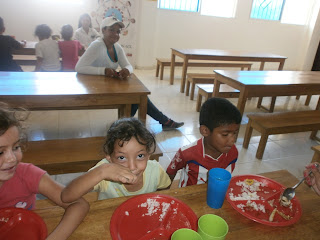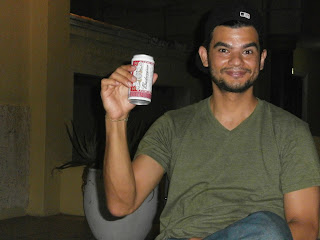Disambiguation: This article does not refer to the song "Project Lover" by Guce featuring Juvenile, although I do really like that song.
 I love projects. Not the projects—but the discipline known as Project management. I got my formal introduction to Project management while working on a Certificate in Business Administration through the University of California Extension Program in 2003. Since then I’ve been hooked, constantly weaving this approach to work into my approach to tackling the world around me. Admittedly, there are times in life when the tools of Project Management are utterly useless (cough, cough, failed relationships). After all, life is not a project, it’s a process. Still, I find it helpful to break it down into bite-sized pieces whenever possible, setting goals and hitting them (or not). One of the best parts about a project is that when it’s over, it’s over. You take a look back to evaluate, but then you get a clean slate to move on with it, whatever “it” might be.
I love projects. Not the projects—but the discipline known as Project management. I got my formal introduction to Project management while working on a Certificate in Business Administration through the University of California Extension Program in 2003. Since then I’ve been hooked, constantly weaving this approach to work into my approach to tackling the world around me. Admittedly, there are times in life when the tools of Project Management are utterly useless (cough, cough, failed relationships). After all, life is not a project, it’s a process. Still, I find it helpful to break it down into bite-sized pieces whenever possible, setting goals and hitting them (or not). One of the best parts about a project is that when it’s over, it’s over. You take a look back to evaluate, but then you get a clean slate to move on with it, whatever “it” might be.
Project Management has been the backbone of my work as a volunteer for the last few years. One of the challenges of getting inserted into an organization as a volunteer is that your exact role might be a little... well... fuzzy and undefined. Organizations run smoothly when their processes run smoothly—defined roles and systems that work efficiently and repetitively. As volunteers, we can’t expect the train to change course or rearrange the order of its carriages just to accommodate us. Instead of trying to force my way into processes that are already in place, I’ve found some success by tackling projects that contribute to the overall flow.
 Yesterday I handed in a final report for a month-long project that we just wrapped up at our site. In late July we kicked off Los Olímpicos Kokoro, a mini-extravaganza to parallel the real deal going on in London. You can put your Spanish-English dictionary down because you won’t find the word “kokoro” anywhere in there. “Kokoro” is the Japanese word for “heart,” and the name of our program. I work at Fútbol Con Corazón, an Colombian NGO—but more specifically, my work falls under a program called Kokoro that is jointly funded by the World Bank and the Japanese Social Development Fund. But I digress...
Yesterday I handed in a final report for a month-long project that we just wrapped up at our site. In late July we kicked off Los Olímpicos Kokoro, a mini-extravaganza to parallel the real deal going on in London. You can put your Spanish-English dictionary down because you won’t find the word “kokoro” anywhere in there. “Kokoro” is the Japanese word for “heart,” and the name of our program. I work at Fútbol Con Corazón, an Colombian NGO—but more specifically, my work falls under a program called Kokoro that is jointly funded by the World Bank and the Japanese Social Development Fund. But I digress... When we were asked to come up with a theme for August’s activities at our site, I suggested we do something to get the kids tuned into the Olympics (and the world beyond their barrio). I got the green light to design the project and I jumped at the chance—the rest is recent history. For the next month, the kids at our site participated in new sports, workshops, and other activities. My favorite part of the project was assigning each of the 34 groups of kids to a different country, which they would represent for the duration of the project. Some of you reading this blog from your corner of the world—New Zealand, South Africa, Senegal, Mexico, Chile, Brasil, Canada, Venezuela, etc.—will get a kick out these pictures.
When we were asked to come up with a theme for August’s activities at our site, I suggested we do something to get the kids tuned into the Olympics (and the world beyond their barrio). I got the green light to design the project and I jumped at the chance—the rest is recent history. For the next month, the kids at our site participated in new sports, workshops, and other activities. My favorite part of the project was assigning each of the 34 groups of kids to a different country, which they would represent for the duration of the project. Some of you reading this blog from your corner of the world—New Zealand, South Africa, Senegal, Mexico, Chile, Brasil, Canada, Venezuela, etc.—will get a kick out these pictures.
The project culminated with La Clausura, the closing event where the kids got a chance to show off everything they’d been working on. The Saturday morning affair featured a mini-parade, the finals of several different sporting events, a homemade kite competition, and an awards ceremony.

Relevos / Relay Races
Salto Largo / Long Jump
Cometas / Kite Competition


Premiación / Award Ceremony
Ultimately, I was really proud of the kids, our team of coaches, and the project in general. Now I’m on to the next project, this time of a completely different variety. Over the next couple of weeks I will be taking the lead on putting together an Emergency Action Plan for our worksite. Like the flu shot that our nurse just stuck me with, I guess it’s better to have it and not need it than the other way around.
Pura Vida,
Drew









































